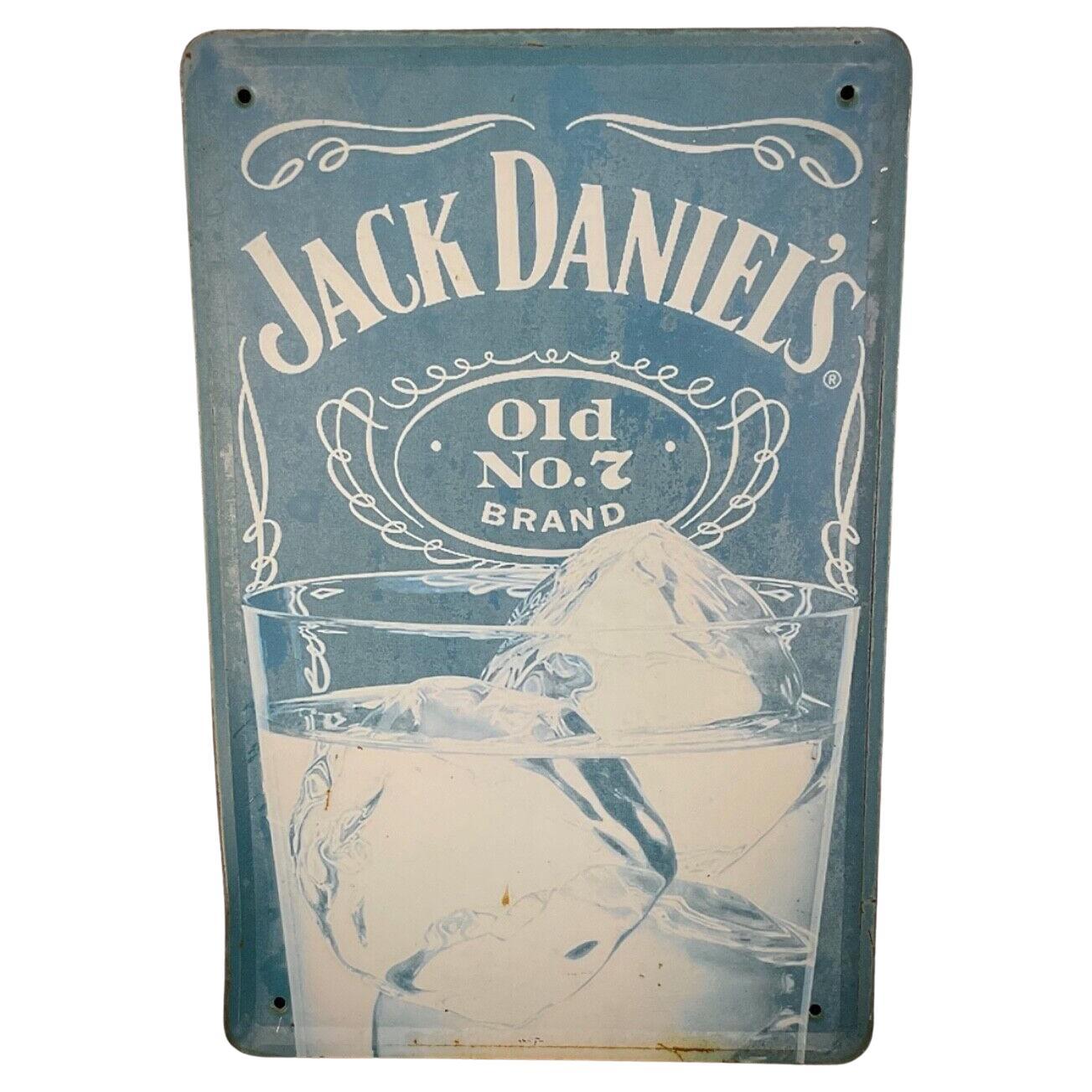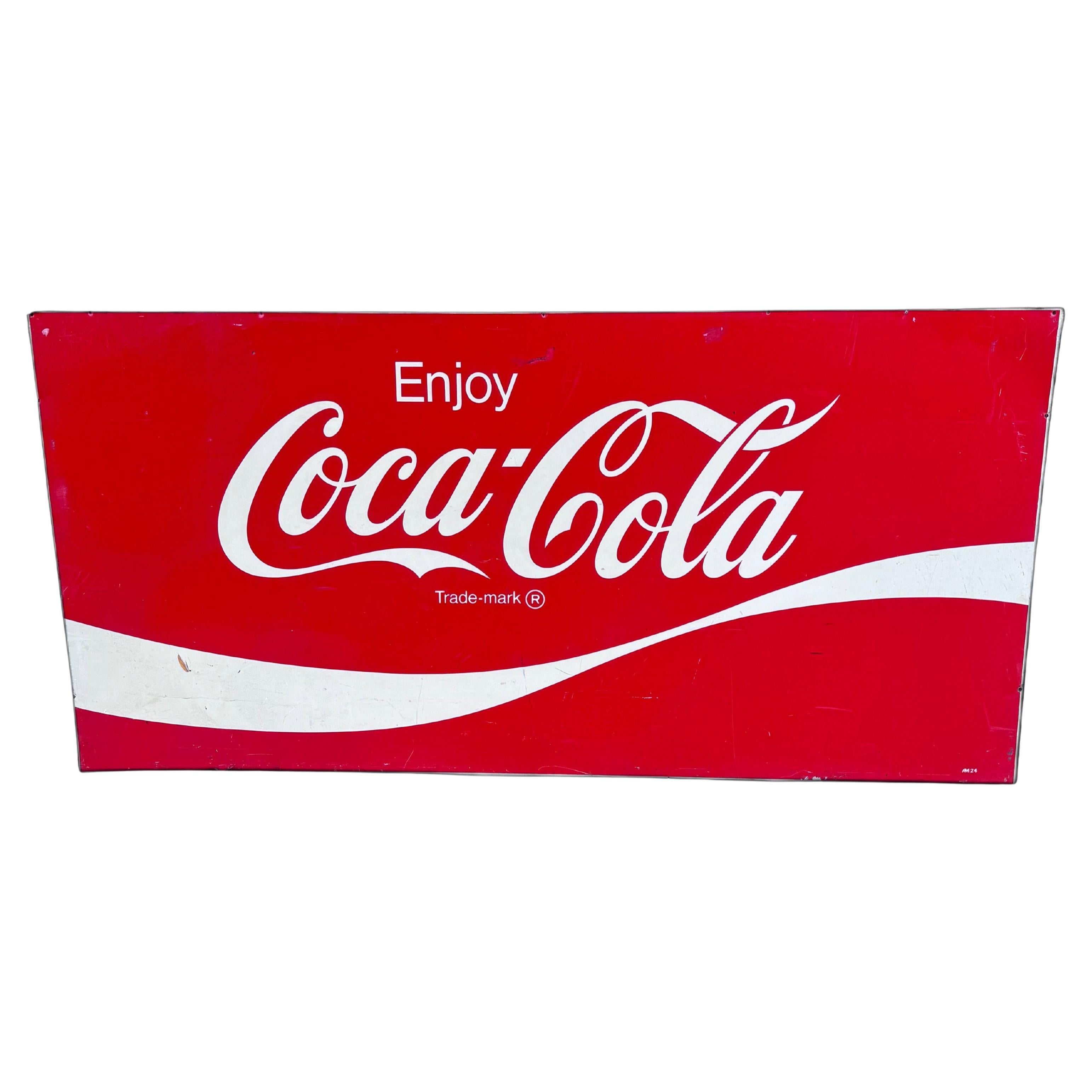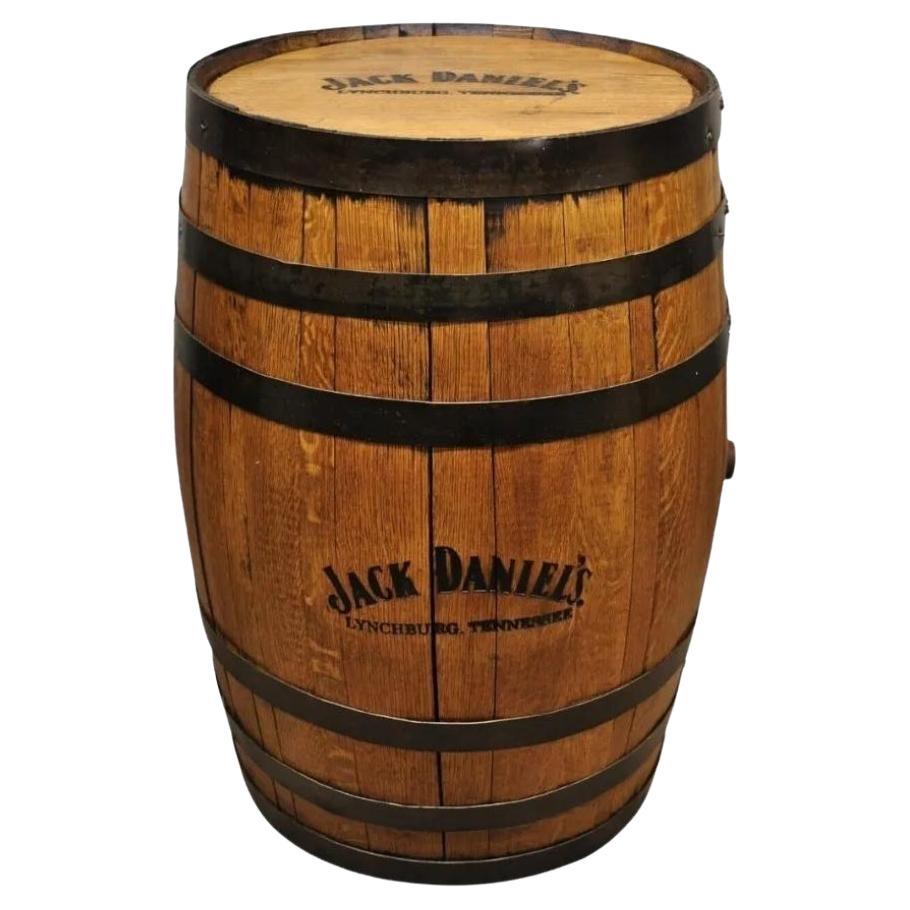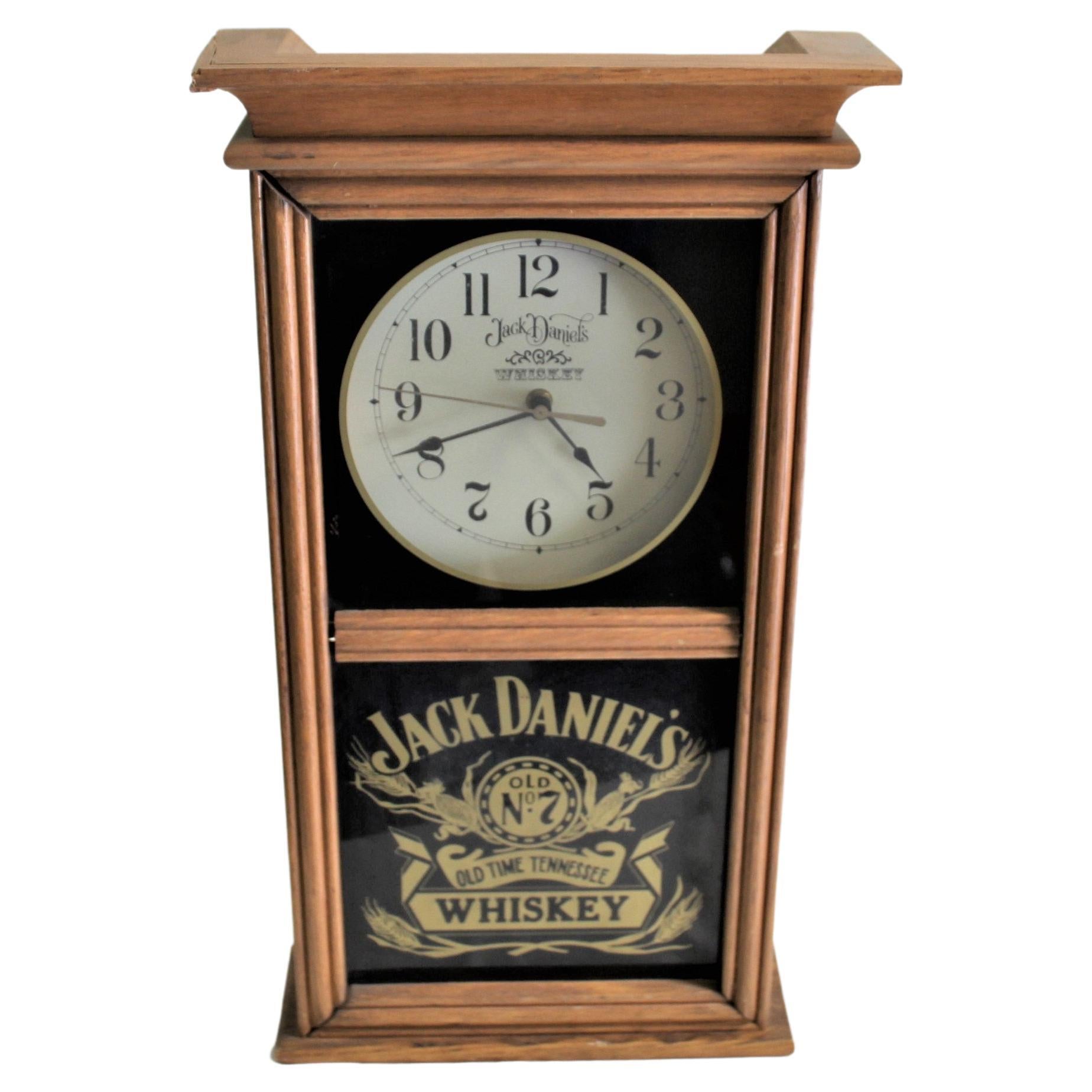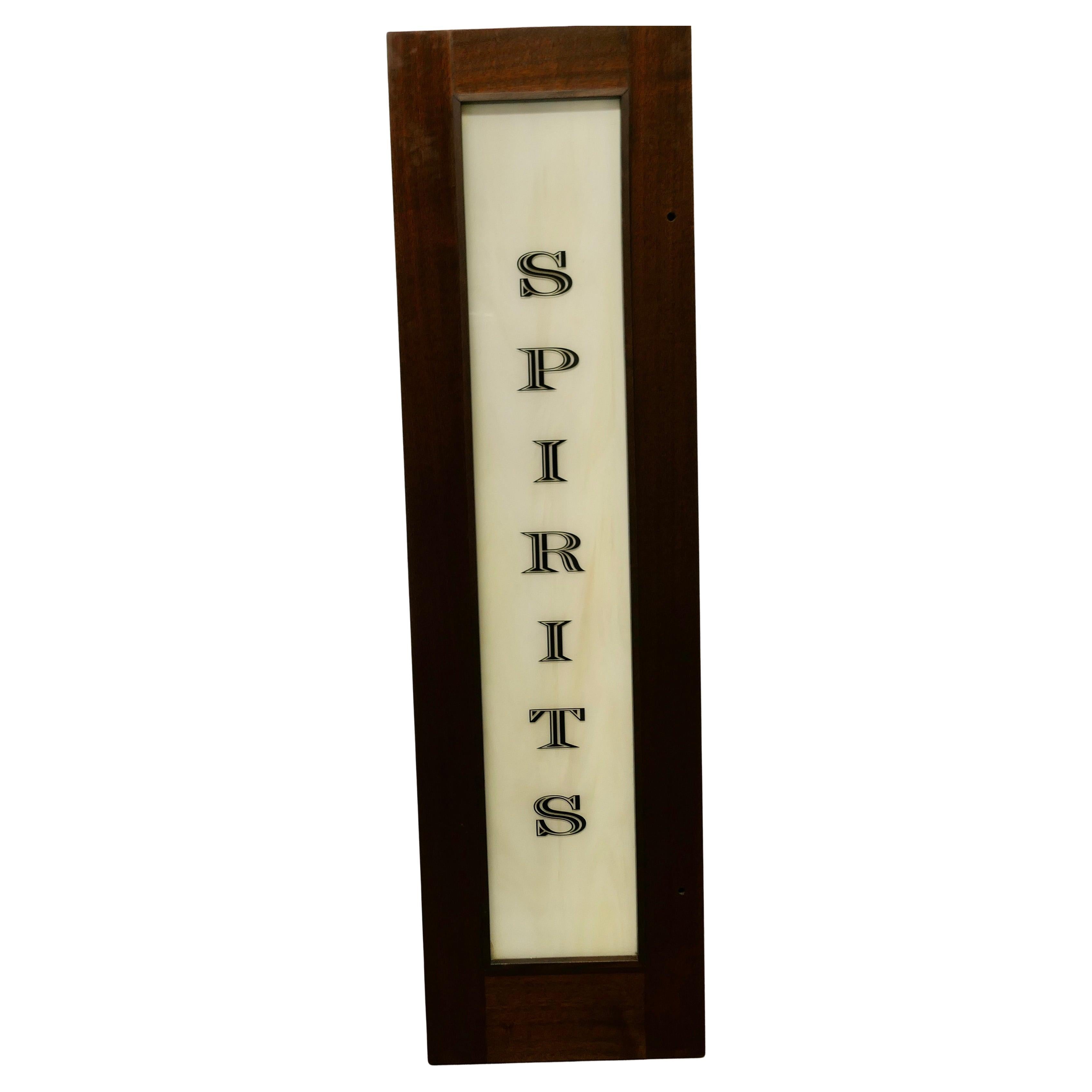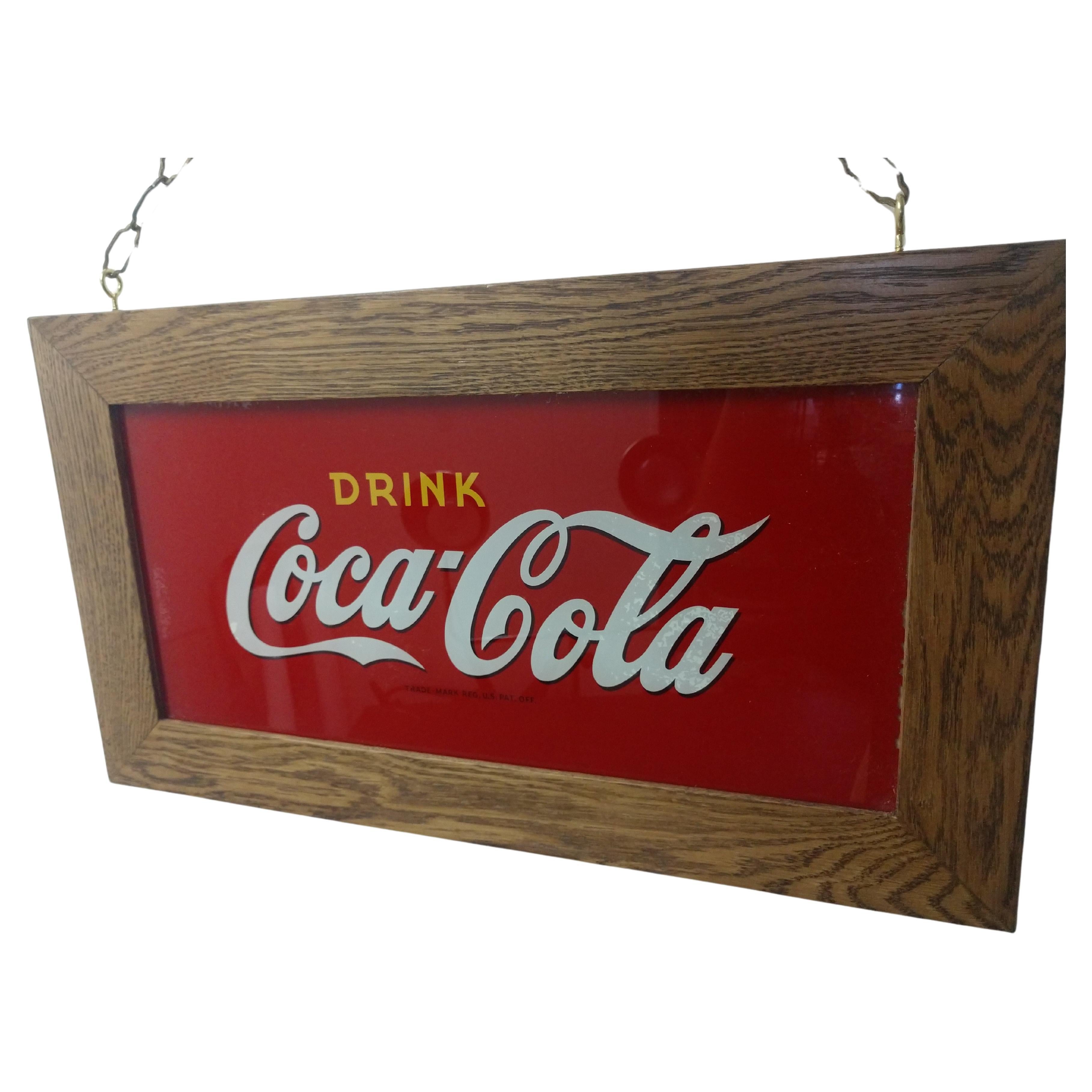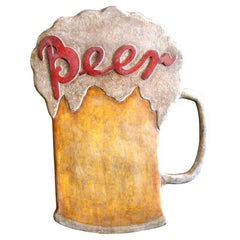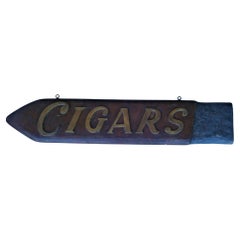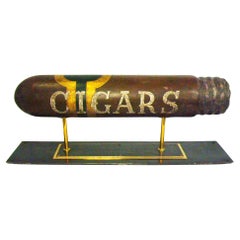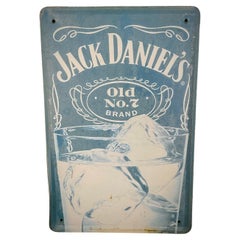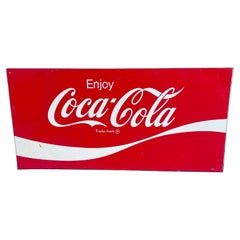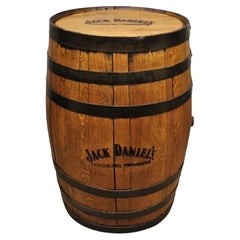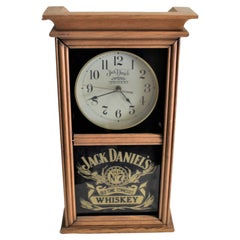Items Similar to Jack Daniels Old Number 7 Whiskey Tin Advertising Bar Sign / 1950s Midcentury
Want more images or videos?
Request additional images or videos from the seller
1 of 10
Jack Daniels Old Number 7 Whiskey Tin Advertising Bar Sign / 1950s Midcentury
$1,330
£1,007.73
€1,156.29
CA$1,871.52
A$2,057.32
CHF 1,081.23
MX$24,983.36
NOK 13,488.11
SEK 12,779.04
DKK 8,629.66
About the Item
Jack Daniels old number 7 whiskey tin advertising bar sign / 1950s midcentury.
Perfect to decorate a Man Cave Bar.
We have specialized in the sale of Art Deco and Art Nouveau and Vintage styles since 1995. If you have any questions we are at your disposal. Pushing the button that reads 'View All From Seller'. And you can see more objects to the style for sale. Why are there so many antiques in Argentina?
In the 1880 – 1940 there was a grate wave of immigration encouraged by the periods of war that were taking place. 1st World War took place between 1914 and 1918 2nd World War took place between 1939 and 1945 The immigrants options were New York or Buenos Aires. Tickets were cheap and in Buenos Aires they were welcomed with open arms, as it was a country where everything was still to be done. Argentina was the country of new opportunities, labour was needed and religious freedom was assured, in many cases the of the family travel first until they were settled and then the rest of the family members join them. In the immigrant museum “Ellis Island Immigrant Building” in New York you can se the promotional posters of the boats that would take them to a new life. Between the years 1895 and 1896, Argentina had the highest DGP (gross domestic product) per capita in the world according to the Maddison Historical Statistics index, this situation arose due to the large amount of food being exported to European countries, which were at war. The Argentinean ships left the port of Buenos Aires with food, but they returned with furniture, clothes and construction elements, (it´s common to see this the old buildings of the historic neighbourhood of San Telmo, the beams with the inscription “Made in England)”, as well as many markets that were built in Buenos Aires, such us the San Telmo Market, whose structure was brought by ship and afterwards assembled in 900 Defensa Street. With the great influence of European immigrants living in the country, the children of the upper classes travelled to study in France, resulting in the inauguration of “La Maison Argentinienne”, on 27th of June 1928, in the international city of Paris, which hosted many Argentinians that were studying in Frace. It´s the fourth house to be built after France, Canada and Belgium, being the first Spanish-speaking one. Still in place today (17 Bd Jourdan, 75014, Paris, France). Many of the children of these wealthy families who attended international art exhibitions, museums and art courses abroad, took a keen interest in the European style. This is why Buenos Aires was at the time referred as “The Paris of South America”. Between the years 1890 and 1920 more than a hundred Palaces were built on Alvear Avenue the most exclusive avenue in Buenos Aires. Today some of these palaces have been transformed into museums, hotels and embassies. In the year 1936, the Kavanagh building was inaugurated, it was the tallest reinforced concrete building in South America. During 1994 the American Society of Civil Engineers distinguished it as an “international engineering milestone”, and it´s now considered a World Heritage of Modern Architecture. At the time was common to hire foreign architects such as Le Corbusier, who visited Buenos Aires/Argentina in 1929 and in 1948 he drew up the blueprints for a house built in La Plata City (which was declared a World Heritage Site). In 1947, the Hungarian architect Marcelo Breuer designed “Parador Ariston” in the seaside city of Mar del Plata. After an Argentinean student at Harvard University convinced him to come to Argentina. He worked on an urban development project in the Casa Amarilla, area of La Boca. The Ukrainian architect, Vladimiro Acosta, arrives in Argentina in 1928 and worked as an architect until que moved to Brazil. Antonio Bonet, a Spanish architect who worked with Le Corbusier in Paris, arrives in Argentina in 1937, where he carried out several architectural works and in 1938 designs the well-known BFK chair. Andres Kálnay, of Hungarian origin, made around 120 architectural masterpieces, among which the former Munich brewery stands out, he even made the furniture’s design. The German architect, Walter Gropius, director of the Bauhaus, lived in Argentina, where he wrote articles for “Sur” magazine and founded in Buenos Aires, an architectural firm with Franz Möller, who was also an architect, where he built two houses. At the same time several famous designers decided to immigrate to Argentina, among them we can find the well-known French designer, Jean-Michel Frank, who arrived in the country in 1940 and also worked for the Rockefeller family. Special pieces were made, which were sold exclusively in the country, such as the well-known German company “WMF”, who sold their products by catalogue, which were chosen by the ladies of high society in the list of wedding gifts, as well as the pieces designed by Christofle. The Swiss sculptor Alberto Giacometti, made special pieces for Argentinean mansions. In 1904 the first Jansen branch outside Paris was established in Buenos Aires, as the Argentinean clientele demanded a large amount of furniture, from the end of the 19th century to the mid-20th century. In 1970, the brand Rigolleau Argentina made pieces authorised by Lalique. The brands Maple and Thompson also set up shop in the country. The French plastic artist, Marcel Duchamp moved to Argentina in 1918-1919. Glass signed Gallé, Charder, Leverre, Schneider, Muller and other French firms. They were bought in flower shops and were given to ladies with beautiful floral arrangements. Some furniture manufacturers travelled to international fairs and bough the patterns to produce the furniture in Argentina, such as the furniture firm Englander and Bonta, who bought the patterns in Italy. It is worth mentioning that in Argentina we have the largest community of Italians outside of Italy, as it is estimated that 70 percent of the inhabitants have at least one Italian descendant, followed by Spanish immigrants. The most Important furniture stores in Argentina: Comte is founded in 1934 (under the direct management of Jean Michel Frank in 1940). Nordiska (Swedish company established in 1934). Churba in 1960, a company that brought foreign designers to present their furniture in the country: Denmark: (Arne Jacobsen, Finn Juhl, Bender Madsen, Ejner Larsen, Poul Kjaerholm, Hans Wegner) Sweden: (Hans Agne Jakobsson, Gustavsberg) United States: (Herman Miller) Finland: (Lisa Johansson, Folke Arstrom, Tapio Wirkkala, Alvar Aalto, Timo Sarpaneva) Swedish Factory: (Orrefors) Italy: (Littala, Vico Magistretti, Emma Gismondi, Gae Aulenti, Angelo Mangiarotti, Elio Martinelli, Gianna Celada, Angelo Mangiarotti, Mario Bellini, Carlo Scarpa) Finland: (Olivia Toikka) Plata Lappas (Lappas Silver): a goldsmith shop founded in 1887 in Argentina by Alcibiades Lappas of Greek origin. In 2019, in Argentina took place “the Art Deco world congress” . Argentina currently has more than 100 Art Deco buildings and another 90 Art Nouveau buildings throughout the city of Buenos Aires. Argentina is a country that has not been involved in many wars, which is why it has been a refuge for works of art and antiques from different periods of time, unlike European countries. That is way many collectors, museums and antique dealers from all over the world visit it, you should not miss the opportunity to visit this great country.
- Creator:Jack Daniels (Maker)
- Dimensions:Height: 17.52 in (44.5 cm)Width: 11.5 in (29.2 cm)Depth: 0.12 in (3 mm)
- Style:Mid-Century Modern (Of the Period)
- Materials and Techniques:
- Place of Origin:
- Period:
- Date of Manufacture:1950s
- Condition:Wear consistent with age and use. Minor structural damages. Minor fading. Nice look. Some wear and bents you can see on the pictures.
- Seller Location:Buenos Aires, AR
- Reference Number:1stDibs: LU2027315692351
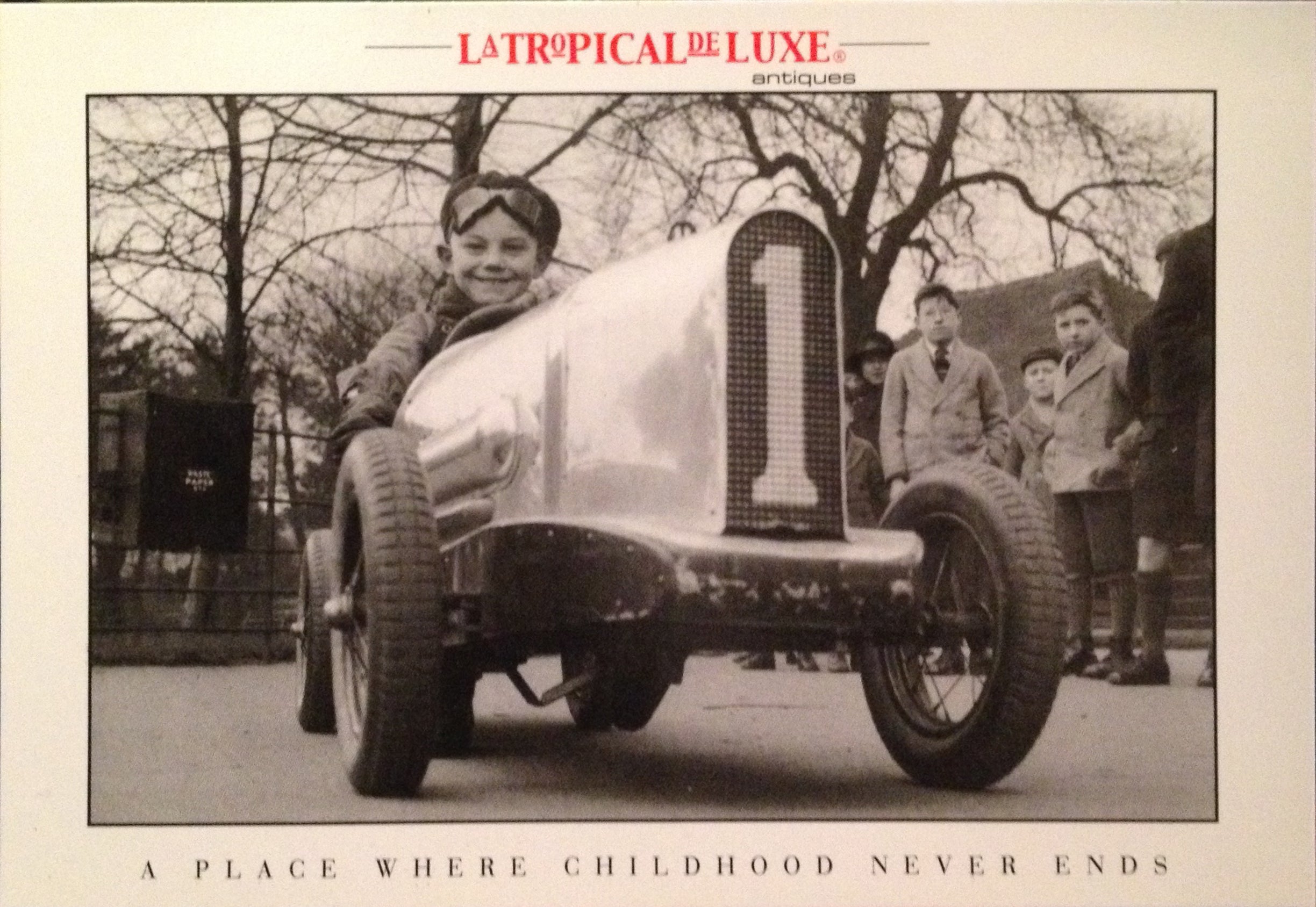
About the Seller
4.9
Vetted Professional Seller
Every seller passes strict standards for authenticity and reliability
Established in 2002
1stDibs seller since 2016
323 sales on 1stDibs
Typical response time: <1 hour
- ShippingRetrieving quote...Shipping from: Buenos Aires, Argentina
- Return Policy
Authenticity Guarantee
In the unlikely event there’s an issue with an item’s authenticity, contact us within 1 year for a full refund. DetailsMoney-Back Guarantee
If your item is not as described, is damaged in transit, or does not arrive, contact us within 7 days for a full refund. Details24-Hour Cancellation
You have a 24-hour grace period in which to reconsider your purchase, with no questions asked.Vetted Professional Sellers
Our world-class sellers must adhere to strict standards for service and quality, maintaining the integrity of our listings.Price-Match Guarantee
If you find that a seller listed the same item for a lower price elsewhere, we’ll match it.Trusted Global Delivery
Our best-in-class carrier network provides specialized shipping options worldwide, including custom delivery.More From This Seller
View AllBeer Stein / Mug Pub Sign. Mid Century Wall Hanging Folk Art Sign. 1940´s
Located in Buenos Aires, Olivos
Beer Stein / Mug Pub Sign. Mid Century Wall Hanging Folk Art Sign. 1940´s. Bar Collectible.
Perfect gift for any Beer fan. Perfect for ...
Category
Mid-20th Century American Mid-Century Modern Decorative Art
Materials
Wood
Cigars Store / Trade Folk Art Wooden Carved Sign. c 1900
Located in Buenos Aires, Olivos
American Folk art wooden "CIGARS" sign from the 1920's.
Great old Store Trade sign. Wood cut to cigar shape. Lettered in Gold Paint.
In good conditions, it was a in doors sign. Perfect for any cigar smoker.
Cigars History:
A cigar is basically dried tobacco leaves that are rolled and wrapped by other tobacco leaves in order to give you a full tobacco smoking experience.
Cigars are becoming more popular all around the world recently because they are exposed to a pop culture where a lot of famous people like Michael Jordan and Arnold Schwarzenegger smoke them.
In order to understand why cigars have become very well-known, we need to take a good look at their history and where they came from. That way, we can truly understand this pop phenomenon. Here is a brief history of cigars.
Origin of Cigars
The exact origin of cigars is not entirely known but historians believe that cigars were first invented by the ancient Mayans.
The ancient Mayans would collect tobacco leaves and wrap them up in a plantain leave in order to smoke it. An ancient Mayan pot...
Category
Early 20th Century American Folk Art Signs
Materials
Wood
1940´s Donald Duck Hand Carved Wooden Sign Wall Sculpture
By Walt Disney Productions
Located in Buenos Aires, Olivos
Fantastic Mid-Century Donald Duck Advertising Sign.
1940´s Hand Carved Advertising Element. Maybe made for a Cinema or for a book presentation.
Over the course of nearly eight dec...
Category
Mid-20th Century American Mid-Century Modern Wall-mounted Sculptures
Materials
Wood
Giant Advertising Cigar Statue / Bar Lounge / Cigars
Located in Buenos Aires, Olivos
Giant Advertising Cigar Statue / Bar Lounge / Cigars.
Large Cigar Tobacco Trade Sign Cigars, made of wood with an iron and brass support. Fantastic Folk A...
Category
Mid-20th Century American Mid-Century Modern Tobacco Accessories
Materials
Brass, Iron
$5,325 Sale Price
25% Off
Art Deco Napier Recipe / Menu Cocktail Shaker, c.1930's
By Napier Co.
Located in Buenos Aires, Olivos
20th century Art Deco "Dial a Drink" recipe menu cocktail shaker silver plate circa 1930.
A wonderful mechanism wraps around the shaker and works...
Category
Mid-20th Century British Mid-Century Modern Barware
Materials
Brass
Antique 1902 James Dixon & Son Sterling Silver / Leather Skin Hip Flask
By James Dixon & Sons
Located in Buenos Aires, Olivos
A magnificent, fine and impressive, antique George V glass, English sterling silver and skin Leather mounted hip flask.
This magnificent antique George V sterling silver hip flask has a rectangular form with rounded corners.
The upper portion of the large glass body is ornamented with an impressive skin covering.
This impressive flask is fitted with a plain domed fully hallmarked hinged cover, securing with a bayonet fitting.
This Lskin hip flask retains the original hallmarked push fit drinking cup.
Marked English Sterling Silver J.D & S into a shield, James Dixon & Sons, London 1902.
Business established in 1806 in Silver Street, Sheffield by James Dixon in partnership with a Mr. Smith. The firm became James Dixon & Son (1823), James Dixon & Sons (1835c.) and James Dixon & Sons Ltd in 1920. London showrooms were opened in London (1873), Sidney and Melborne (1912).
Such examples are becoming increasingly difficult to locate.
This antique hip flask...
Category
Early 20th Century British Art Nouveau Barware
Materials
Sterling Silver
You May Also Like
Vintage Jack Daniel's Old No. 7 Brand Advertising Plaque - 2Y346
Located in Bordeaux, FR
A charming vintage advertising plaque for "Jack Daniel's Old No. 7 Brand," showcasing the iconic whiskey branding. This piece is in original, untouched condition, preserving its auth...
Category
20th Century French Antiquities
Materials
Metal
$240 Sale Price
70% Off
Vintage Metal Coca-Cola Sign
By Coca Cola Bottling Co.
Located in Chicago, IL
Vintage Metal Coca-Cola Sign
This vintage Coca-Cola sign circa 1969 - 1985 features the Coca-Cola "Ribbon" logo with the ever classic red and white design. This large scale pop art ...
Category
Mid-20th Century American Industrial Historical Memorabilia
Materials
Metal
Jack Daniels Whiskey Barrel Engraved Oak Wood Metal Bands
Located in Philadelphia, PA
Jack Daniels Whiskey Barrel Engraved Oak Wood Metal Bands. Item features Laser engraved "Jack Daniels Lynchburg, TN" to side, metal bands, solid oak wood frame. Circa Late 20th Centu...
Category
Late 20th Century Modern Architectural Models
Materials
Oak
Jack Daniels Clock /Oak Case /Battery
By Svoboda
Located in Los Angeles, CA
A good looking Clock for any Jack Daniels Collector. Look good on a bar top or on the wall. Most likely Salesman gift ! Good size. In excellent condition, has been in a private colle...
Category
Vintage 1980s American American Classical Mantel Clocks
Materials
Oak
Full Length Opaline Glass Bar Sign, Spirits Saved During Refurbishment
Located in Godshill, Isle of Wight
Full Length Opaline Glass Bar Sign, Spirits
Saved During Refurbishment, this very good quality piece is framed in solid Walnut, the sign itself “spirits” is on very attractive Opal...
Category
Vintage 1960s Folk Art Signs
Materials
Art Glass
Antique Reverse Painted Glass Drink Coca Cola Sign Ice Cream Parlour circa 1920
By Coca Cola Bottling Co.
Located in Port Jervis, NY
Fabulous 10 x 21 reverse painted glass Coca Cola sign from the twenties. In excellent vintage condition with a bit of fixing on the upper right corner. Made by the Price Bros. from C...
Category
Vintage 1920s American Industrial Wall-mounted Sculptures
Materials
Brass
More Ways To Browse
Mid Century Modern Advertising
Whiskey Bar
Green 1950s Ceramics
Mid Century Modern Whiskey Glasses
Highball Glasses Gold
Silver Pineapple
Chrome Ice Bucket
Cocktail Glasses Red
Etched Glass Decanters
Heath Ceramics
Martini Set
Antique Champagne Bucket
Gold Glass High Ball Glasses
Gold Highball
Wine Pourer
Art Deco Champagne Bucket
Mid Century Modern Coasters
Silver Boar
